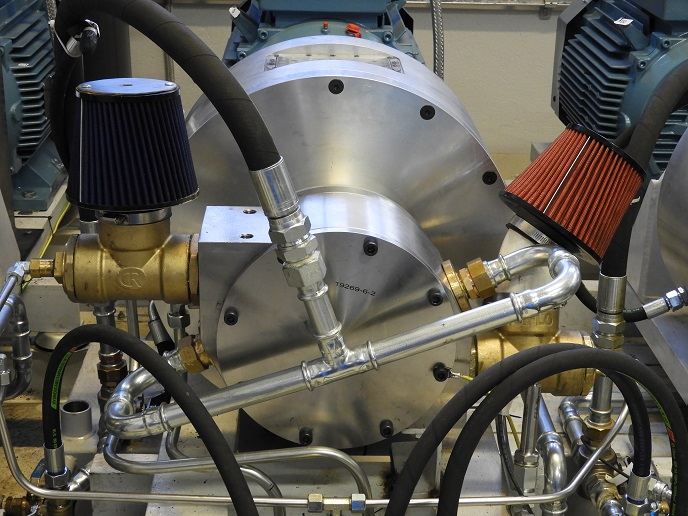A novel way to put the pressure on leads to green industrial technology
Compressing a gas to a smaller volume increases its pressure. Compressed air systems account for approximately 10 % of industrial electricity consumption in European and United States' manufacturing industries and the energy efficiency of many systems is low. The EU-funded CRC project set out to address this important problem and contribute to Europe’s sustainable development goals. Exploiting their pioneering patented centric reciprocating – CR – technology has enabled scientists to do just that.
A new take on an old design yields numerous benefits
Like the common positive displacement piston compressor, the CR compressor (CRC) is a positive displacement machine. However, according to project coordinator Tor Arne Hauge of OTECHOS AS, the coordinating company, “Instead of the piston, the CRC process unit has two coaxially rotating concentric rotors with two vanes each.” Four chambers are formed between adjacent vanes and each chamber expands and contracts (analogous to reciprocation) twice per revolution, for 8 actions per revolution equivalent to 8 piston cylinders. He adds: “Elliptical gears enable a unique variable angular velocity of the rotors that rotate in the same direction and 90 degrees out of phase. Valveless inlets and outlets and very few moving parts result in an oil-free compression process.” Thanks to its unique and innovative design, the CRC enables 15-20 % less energy consumption relative to conventional screw- and piston-based machines. Hauge and his team were pleasantly surprised to add one more important benefit to the CRC’s repertoire. They discovered that it works equally well with wet gas, something that is a big challenge for other types of positive displacement compressors.
Flexible patented technology for numerous applications
Hauge and his team are now seeking partnerships exploiting the CRC for the industrial process market. In parallel, they are designing a specialised CRC for high-end solutions. The CR technology has also spawned three additional applications: an innovative internal combustion engine, the CRE, a CR regenerator (CRR), and a CR pump (CRP). The CRE has all the benefits of the CRC and uses about 20 % less fuel than a modern car engine. Hauge continues, “The CRR is an expansion machine that handles high temperatures (greater than 400 °C) mainly for electricity production from waste heat recovery, geothermal energy production, bioenergy and renewables. Finally, the CRP is a rotary positive displacement pump suited for multi-phase flow. Among its benefits are its high flow rate and attainable pressure relative to size.”
A holistic product line supports sustainability
The patented CR technology is now the backbone of four industrially important machines: a compressor, an engine, a pump, and a regenerator. The design with few moving parts requiring minimal to no lubrication enables a potential increase in energy efficiency relative to existing solutions in the range of 30 %, even greater than the EU target of 20 % for 2020. With the global market for air compressors alone expected to reach nearly USD 27 billion by 2023, CRC has paved the way to global leadership for OTECHOS in green industrial solutions.
Keywords
CRC, energy, air, industrial, displacement, compressor, piston, pump, pressure, CRE, engine, rotor, patent, centric reciprocating (CR), CR regenerator (CRR)







